Human Orbital Spaceflights
![]()
International Flight No. 45Skylab 3USA |
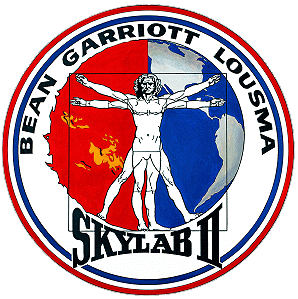 |
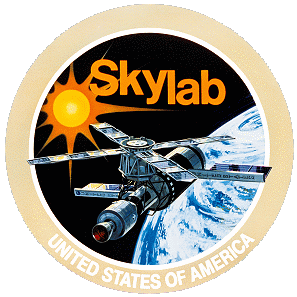 |
![]()
Launch, orbit and landing data
walkout photo |
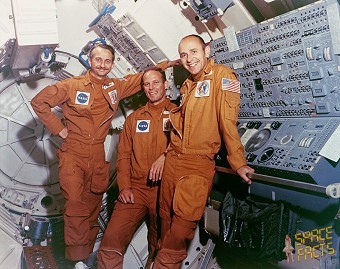 |
||||||||||||||||||||||
alternative crew photo |
|||||||||||||||||||||||
alternative crew photo |
Crew
| No. | Surname | Given names | Position | Flight No. | Duration | Orbits | |
| 1 | Bean | Alan LaVern | CDR | 2 | 59d 11h 09m 04s | 858 | |
| 2 | Garriott | Owen Kay | SPT | 1 | 59d 11h 09m 04s | 858 | |
| 3 | Lousma | Jack Robert | PLT | 1 | 59d 11h 09m 04s | 858 |
Crew seating arrangement
|
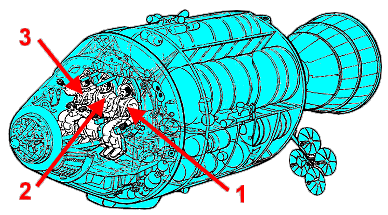 |
Backup Crew
|
 |
||||||||||||||||||||
Support Crew
|
||||||||||||||||
Hardware
| Launch vehicle: | Saturn IB (SA-207) |
| Spacecraft: | Apollo SL-3 (CSM-117) |
Flight
|
Launch from Cape Canaveral (KSC) and
landing 370 km southwest of San Diego in the Pacific Ocean. The Skylab (SL) was a manned, orbiting spacecraft composed of five parts, the Apollo telescope mount (ATM), the multiple docking adapter (MDA), the airlock module (AM), the instrument unit (IU), and the orbital workshop (OWS). The Skylab was in the form of a cylinder, with the ATM being positioned 90 deg from the longitudinal axis after insertion into orbit. The ATM was a solar observatory, and it provided attitude control and experiment pointing for the rest of the cluster. It was attached to the MDA and AM at one end of the OWS. The retrieval and installation of film used in the ATM was accomplished by astronauts during extravehicular activity (EVA). The MDA served as a dock for the command and service modules, which served as personnel taxis to the Skylab. The AM provided an airlock between the MDA and the OWS, and contained controls and instrumentation. The IU, which was used only during launch and the initial phases of operation, provided guidance and sequencing functions for the initial deployment of the ATM, solar arrays, etc. The OWS was a modified Saturn 4B stage suitable for long duration manned habitation in orbit. It contained provisions and crew quarters necessary to support three-person crews for periods of up to 84 days each. All parts were also capable of unmanned, in-orbit storage, reactivation, and reuse. The Skylab itself was launched on May 14, 1973. The Command Module (CM) was a conical pressure vessel with a maximum diameter of 3.9 m at its base and a height of 3.65 m. It was made of an aluminum honeycomb sandwich bonded between sheet aluminum alloy. The base of the CM consisted of a heat shield made of brazed stainless steel honeycomb filled with a phenolic epoxy resin as an ablative material and varied in thickness from 1.8 to 6.9 cm. At the tip of the cone was a hatch and docking assembly designed to mate with the lunar module. The CM was divided into three compartments. The forward compartment in the nose of the cone held the three 25.4 m diameter main parachutes, two 5 m drogue parachutes, and pilot mortar chutes for Earth landing. The aft compartment was situated around the base of the CM and contained propellant tanks, reaction control engines, wiring, and plumbing. The crew compartment comprised most of the volume of the CM, approximately 6.17 cubic meters of space. Three astronaut couches were lined up facing forward in the center of the compartment. A large access hatch was situated above the center couch. A short access tunnel led to the docking hatch in the CM nose. The crew compartment held the controls, displays, navigation equipment and other systems used by the astronauts. The CM had five windows: one in the access hatch, one next to each astronaut in the two outer seats, and two forward-facing rendezvous windows. Five silver/zinc-oxide batteries provided power after the CM and SM detached, three for re-entry and after landing and two for vehicle separation and parachute deployment. The CM had twelve 420 N nitrogen tetroxide/hydrazine reaction control thrusters. The CM provided the re-entry capability at the end of the mission after separation from the Service Module. The Service Module (SM) was a cylinder 3.9 meters in diameter and 7.6 m long which was attached to the back of the CM. The outer skin of the SM was formed of 2.5 cm thick aluminum honeycomb panels. The interior was divided by milled aluminum radial beams into six sections around a central cylinder. At the back of the SM mounted in the central cylinder was a gimbal mounted re-startable hypergolic liquid propellant 91,000 N engine and cone shaped engine nozzle. Attitude control was provided by four identical banks of four 450 N reaction control thrusters each spaced 90 degrees apart around the forward part of the SM. The six sections of the SM held three 31-cell hydrogen oxygen fuel cells which provided 28 volts, two cryogenic oxygen and two cryogenic hydrogen tanks, four tanks for the main propulsion engine, two for fuel and two for oxidizer, and the subsystems the main propulsion unit. Two helium tanks were mounted in the central cylinder. Electrical power system radiators were at the top of the cylinder and environmental control radiator panels spaced around the bottom. This spacecraft was almost identical to the command and service module used for Apollo missions. Modification was made to accomodate long-duration Skylab missions and to allow the spacecraft to remain semi-dormant while docked to the Skylab cluster. A crew of three men and their provisions were carried. The mission of this spacecraft was to ferry a crew of three to the Skylab complex and return them to Earth. During the approach phase, problems developed in the Apollo CSM's reaction control system, and a leak formed. The crew was able to safely dock with Skylab, but troubleshooting would continue with the problem. For the first time, an Apollo spacecraft would be rolled out to Launch Complex 39 for a rescue mission, made possible by the ability for the station to have two Apollo CSMs docked at the same time. They eventually fixed the problem, and the rescue mission was never launched. This mission carried the second crew of the Skylab space station. Skylab 3 continued a comprehensive medical research program that extended the data on human physiological adaptation and readaptation to space flight collected on the previous Skylab 2 mission. In addition, Skylab 3 extended the astronauts stay in space from approximately one month to two months. Therefore, the effects of flight duration on physiological adaptation and readaptation could be examined. A set of core medical investigations were performed on all three Skylab manned missions. These core investigations were the same basic investigations that were performed on Skylab 2, except that the Skylab 3 inflight tests were supplemented with extra tests based on what researchers learned from the Skylab 2 science results. For example, only leg volume measurements, preflight and postflight stereophotogrammetry, and in-flight maximum calf girth measurements were originally scheduled for all three Skylab missions. In-flight photographs from Skylab 2 revealed the "puffy face syndrome" which prompted the addition of in-flight torso and limb girth measurements to gather more data on the apparent headward fluid shift on Skylab 3. Other additional tests included arterial blood flow measurements by an occlusive cuff placed around the leg, facial photographs taken before flight and during flight to study the "puffy face syndrome", venous compliance, hemoglobin, urine specific gravity, and urine mass measurements. These inflight tests gave additional information about fluid distribution and fluid balance to get a better understanding of the fluid shift phenomena. The Skylab 3 biological experiments studied the effects of microgravity on mice, fruit flies, single cells and cell culture media. Human lung cells were flown to examine the biochemical characteristics of cell cultures in the microgravity environment. The two animal experiments were entitled Chronobiology of Pocket Mice and Circadian Rhythm in Vinegar Gnats. Both experiments were unsuccessful due to a power failure 30 hours after launch, which killed the animals High school students from across the United States participated in the Skylab missions as the primary investigators of experiments that studied astronomy, physics, and fundamental biology. The student experiments performed on Skylab 3 included the study of libration clouds, x-rays from Jupiter, in-vitro immunology, spider web formation, cytoplasmic streaming, mass measurement, and neutron analysis. The crew's health was assessed on Skylab by collecting data on dental health, environmental and crew microbiology, radiation, and toxicological aspects of the Skylab orbital workshop. Other assessments were made of astronaut maneuvering equipment and of the habitability of the crew quarters, and crew activities/maintenance experiments were examined on Skylab 2 through 4 to better understand the living and working aspects of life in space. The first of three spacewalks was performed by Owen Garriott and Jack Lousma on August 06, 1973 (6h 31m). This EVA was scheduled before launch to occur on mission day 4, but crew illness (space motion sickness) pushed it back to mission day 10. The main order of business was to install the Twin Pole Sunshade over the parasol installed by the Skylab 2 astronauts because testing on the ground showed that the parasol's nylon fabric could deteriorate from exposure to solar ultraviolet radiation. Owen Garriott assembled two poles, each made up of 11 1.5-m (5-ft) sections, and passed them to Jack Lousma, who was positioned in the portable foot restraint attached to an ATM handrail. Jack Lousma attached the poles to a base plate he installed on a hand rail, unfurled the sunshade fabric, and attached a reefing line to make the shade lie flat. He swiveled the completed shade to cover the station, then returned to the airlock to get equipment for the next phase of the EVA. Jack Lousma ascended the ATM again, installed film, then inspected thruster quads A and B on the Skylab 3 CM from his position on the ATM. The quads were leaking, but Jack Lousma saw no obvious signs of leakage and they later stopped, so Skylab 3 could run its scheduled 56-day duration. Jack Lousma removed a telescope aperture door ramp to keep the door from sticking, which required removal of two bolts not designed for EVA, then deployed the Micrometeoroid Particle Collection experiment. The experiment was originally intended for deployment from the science airlock blocked by the parasol, but was redesigned for EVA deployment and launched with the Skylab 3 crew. The second EVA by Owen Garriott and Jack Lousma occurred on August 24, 1973 (4h 31m). Before Skylab reached orbit, this EVA to change out all ATM film was scheduled to last 2 hours, 45 minutes on day 29 of Skylab 3. The EVA actually was performed on mission day 28. In addition to their film changeout task, Owen Garriott and Jack Lousma installed a 7.3-m (24-ft) cable for a new rate gyro package they installed within the station's pressurized volume. The astronauts also attached a clipboard with two parasol material samples to a handrail, and removed two more ramps from faulty ATM aperture doors. For the third and final spacewalk Alan Bean and Owen Garriott left the station on September 22, 1973 (2h 41m). The Skylab 3 astronauts removed all ATM film for return to Earth, performed partial ATM film installation, and retrieved exposed collectors and samples, including one parasol material sample from the clipboard. The Airlock Module suit cooling system was inoperative because of leaks, so no water flowed through the umbilicals to the astronauts' suits. Air cooling proved adequate for the undemanding tasks at hand, Owen Garriott reported becoming slightly warm, while Alan Bean's hands were warm throughout the EVA. The crew was in better condition after the landing, than the Skylab 2 crew. It was a new flight duration record. The recovery ship was the USS New Orleans. |
EVA data
| Name | Start | End | Duration | Mission | Airlock | Suit | |
| EVA | Garriott, Owen | 06.08.1973, 17:3? UTC | 07.08.1973, 00:?? UTC | 6h 31m | Skylab 3 | Airlock Module | A7LB No. 633 |
| EVA | Lousma, Jack | 06.08.1973, 17:3? UTC | 07.08.1973, 00:?? UTC | 6h 31m | Skylab 3 | Airlock Module | A7LB No. 634 |
| EVA | Garriott, Owen | 24.08.1973, 16:2? UTC | 24.08.1973, 20:5? UTC | 4h 31m | Skylab 3 | Airlock Module | A7LB No. 633 |
| EVA | Lousma, Jack | 24.08.1973, 16:2? UTC | 24.08.1973, 20:5? UTC | 4h 31m | Skylab 3 | Airlock Module | A7LB No. 634 |
| EVA | Garriott, Owen | 22.09.1973, 11:18 UTC | 22.09.1973, 13:59 UTC | 2h 41m | Skylab 3 | Airlock Module | A7LB No. 633 |
| EVA | Bean, Alan | 22.09.1973, 11:18 UTC | 22.09.1973, 13:59 UTC | 2h 41m | Skylab 3 | Airlock Module | A7LB No. 632 |
Photos / Graphics
 |
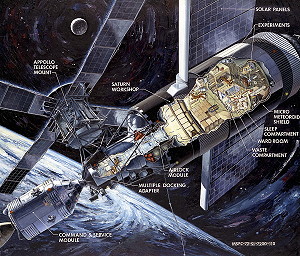 |
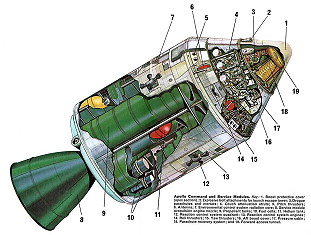 |
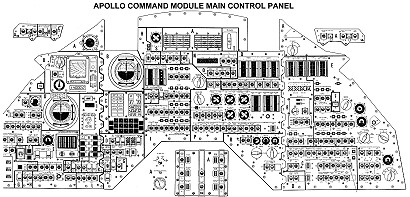 |
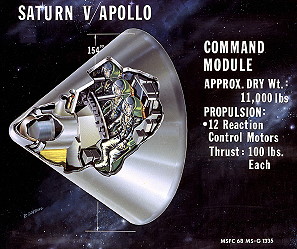 |
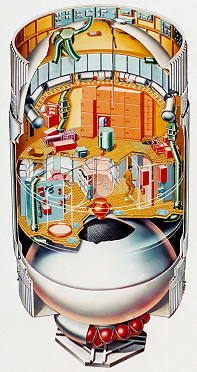 |
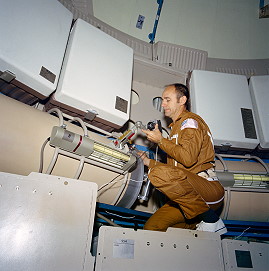 |
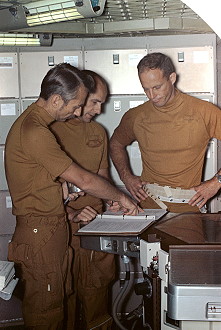 |
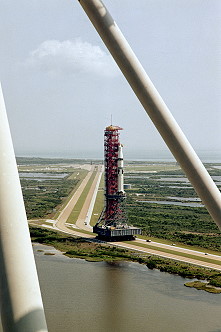 |
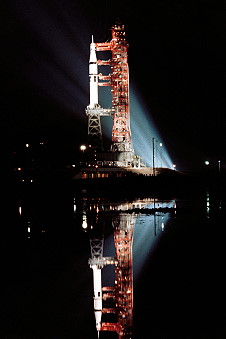 |
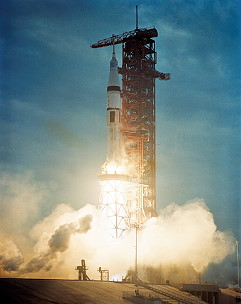 |
 |
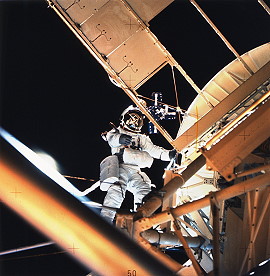 |
 |
 |
 |
 |
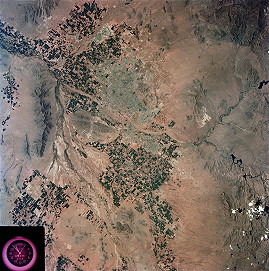 |
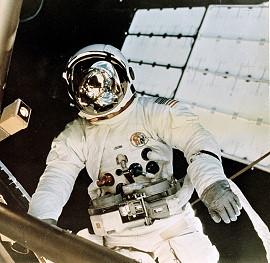 |
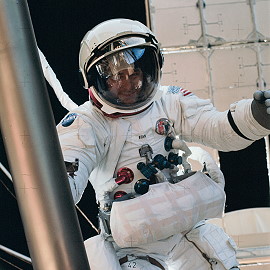 |
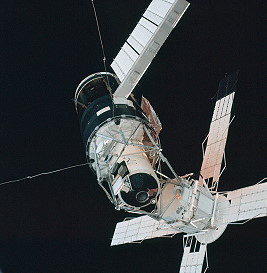 |
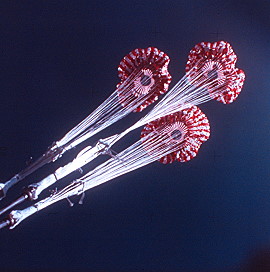 |
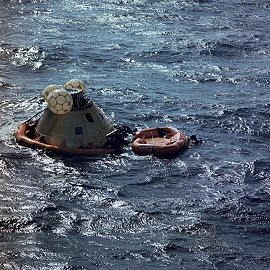 |
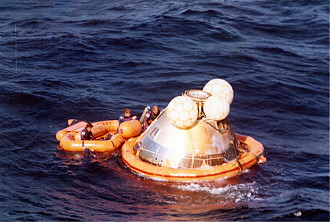 |
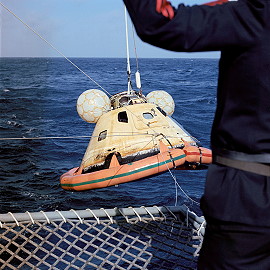 |
|
more Earth observation photos |
|
more EVA photos |
|
| © |  |
Last update on August 11, 2020.  |
 |